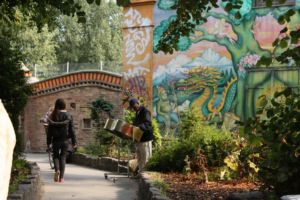News
Study to investigate self-medicating cannabis users
This article is more than 7 years old.

Christiania might be a likely location to find self-medicating cannabis users (photo: flickr/Kieran Lynam)
A new Danish study aims to shine a light on the patterns of medicinal cannabis consumption among users who chose to go outide the official channels.
From January 1 this year it has been legal for general practitioners to prescribe medicinal cannabis to patients with spinal chord injuries, chronic pain, multiple sclerosis and chemotherapy side-effects.
READ ALSO: Government agrees to free medicinal cannabis for terminally-ill patients
But evidence suggests there could be a large number of other people who are self-medicating, reports DR Nyheder.
Sinikka Kvamme, a PhD researcher at the Center for Rusmiddelforskning drug research centre, believes that the number could be as high as 60,000 after finding a Facebook group that discusses the growing trend.
Going off the reservation
Since January, over 600 people have taken advantage of the GP-prescribed cannabis and it is expected that the numbers will double over the next four years.
However, there is still some opposition to prescribing it from doctors, and a poll carried out by Epinion for DR Nyheder in 2016 suggested there are at least 50,000 unofficial users. The Facebook group seems to confirm this.
“It is an important area of research because it is a phenomenon that we don’t know very much about. In the media you hear a lot of individual stories about people who use cannabis as a medicine but there is a lack of systematic data collection in this area,” said Kvamme.
Getting a user’s perspective
Kvamme argues that the user’s perspective is also very important to the debate in terms of building up a picture of what side-effects people experience and what ailments they use the drug to alleviate the pain from.
“Are they just alleviating the symptoms and is cannabis replacing other medicine as a cure? This is something we just don’t know much about,” said Kvamme.
It is also hoped that the results of the research can be used to inform the future political debate about what is still a hot political issue.
Take part in the survey
Kvamme would also like to hear from anyone who has taken medicinal cannabis themselves or has given it to others.
An anonymous survey can be found through the following link: crf.au.dk/cannabis










































